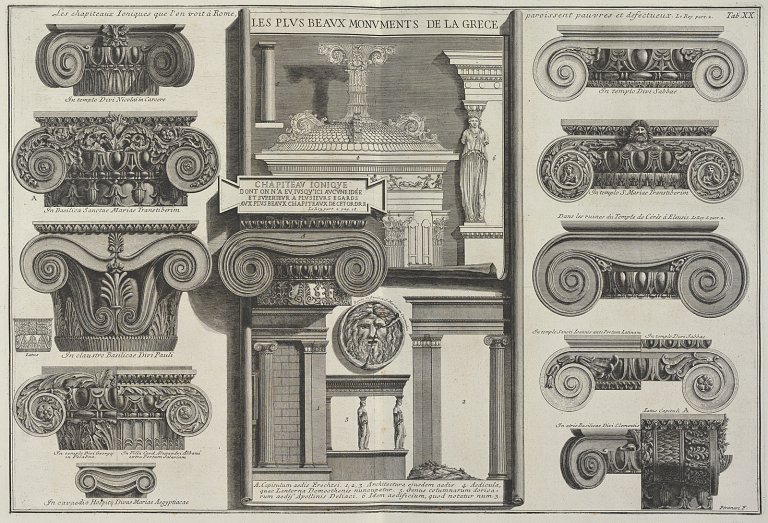Architecture in prints of the 16th–18th century

Technological improvements in graphic techniques at the beginning of the 16th century also led to the use of this medium in the depiction of architecture. The Renaissance revived the principles of ancient architectural orders, which became the basis of modern architecture and graphic art, whose main advantage is the possibility of replicating images, an effective tool for spreading and mediating architectural canons and forms. The depiction of architecture in graphic art from the 16th to the 18th century will be presented in an exhibition at the Archdiocesan Museum from October 16, 2025, to January 4, 2026.
“Very soon, the repertoire of architectural prints was also enriched by vedutas, followed by albums dedicated to urban settlements and individual buildings, including, for example, garden architecture and interior furnishings,” says curator Helena Zápalková. “Among the most important exhibits that visitors will see are richly illustrated albums by Baroque architects Paul Decker, Johann Bernhard Fischer of Erlach and Salomon Kleiner, sets of views of ancient monuments and contemporary Baroque Italian architecture and gardens by Giovanni Battista Falda, and works by one of the most original Italian printmakers of the 18th century, Giovanni Battista Piranesi.”
The exhibition
- Architecture in prints of the 16th–18th century. From the collections of the Archbishopric of Olomouc
- Curator: Helena Zápalková
- Expert cooperation: Ondřej Zatloukal, Miroslav Myšák, Miroslav Kindl
- Conservation and restoration work: Tomáš Guľaš, Veronika Langer Klimszová, Jana Mojžíšová, Gabriela Polívková
- Installations: Tomáš Guľaš, Vlastimil Sedláček, Filip Šindelář, Ondřej Žák, Radka Žáková
- Graphic design: Kateřina Manková
- Translation: Anna Zápalková
- Educational programmes: Hana Lamatová, Marek Šobáň
The exhibition is part of the NAKI III project (DH23P03OVV015): ‘Friedrich Cardinal von Fürstenberg – the last aristocrat on the throne of the Olomouc archbishops’, provided by the Ministry of Culture of the Czech Republic.
Various architectural treatises and theoretical writings of the architects themselves were illustrated through graphics, and contemporary and past buildings were documented. “Especially in the Baroque period, casual and ephemeral architecture also became popular, and designs for ideal buildings, so-called capriccio, emerged from sheer imagination and creativity,” adds Helena Zápalková.
The exhibition will present selected works from the collections of the Archbishopric of Olomouc kept at the Kromeriz castle, which illustrate basically all of the above-mentioned positions of depicting architecture in graphic art from the 16th to the 19th century.